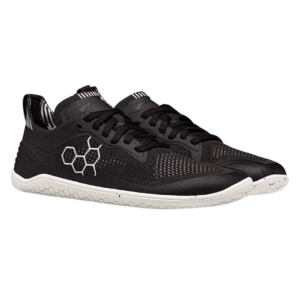Our lives are very busy and we’re oftentimes disconnected from the natural world around us. We’re constantly looking at screens, living in concrete jungles, and battling daily stress. Luckily, there’s a very simple and powerful way to reconnect to your body by grounding to the Earth (aka Earthing)… and it’s completely free.
What are the best grounding techniques? Does it actually have health benefits? How can you incorporate it into your daily routine? Do grounding mats work?
Keep reading to learn more. What on earth is earthing?!
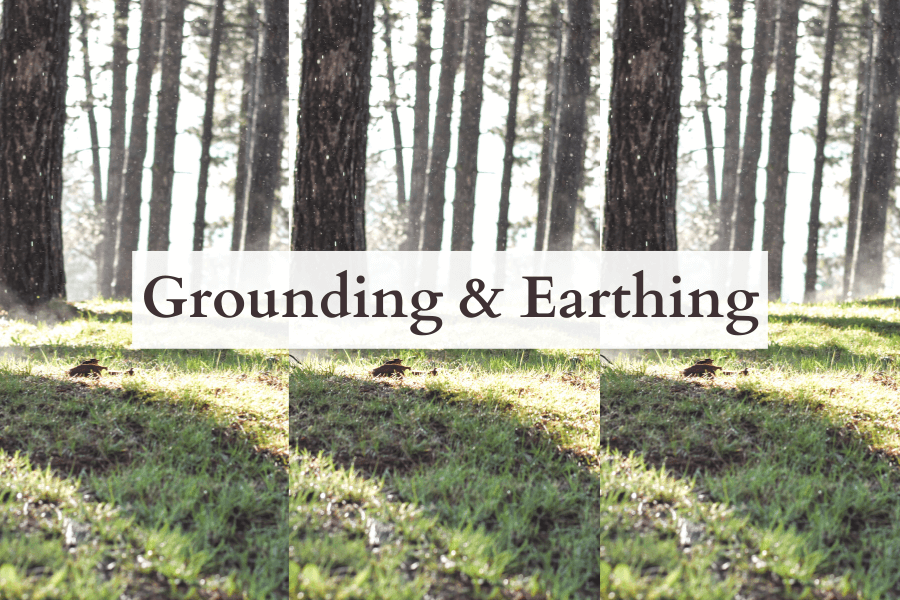
Note: This article contains affiliate links, meaning In On Around will make a small commission at no additional cost to you. This helps me maintain the site. As always, I value full transparency & only work with brands I love and trust.
What Is Earthing?
Earthing, also known as grounding, is a natural practice that involves connecting your body directly to the earth’s surface. It’s commonly referred to as “grounding to the Earth.” This practice is aimed at offsetting the positive electromagnetic fields (EMFs) that come from modern electronic devices, Wi-Fi, and other sources.
The Earth carries a negative charge – through grounding, we can balance our body’s electrical charge. Note: this isn’t the same technique used in mental health treatment, although it can positively impact mental health.
On average, Americans spend 90% of their time indoors.
EPA
Grounding can be achieved through various methods such as walking barefoot on natural surfaces, or merely sitting or lying down on the ground. It’s becoming increasingly popular amongst the health-conscious community… for good reason!
Due to modern living, especially in cities, we’re not grounding nearly as much as our ancestors did. We’re living in high-rise buildings, wearing thick rubber-soled shoes, putting on layers of clothing, and a significant portion of nearby soil is covered in asphalt. We’re completely disconnected from the earth and barely interact with the outdoors. Grounding helps you reconnect to the natural frequencies of the Earth.
What Are EMFs?
Electromagnetic fields (EMFs) are energy fields that surround electrically charged objects and are generated by various sources, such as power lines, electronics, and wireless devices. Although low-level exposure to EMFs is typically considered safe, prolonged exposure to EMFs has been associated with health issues such as cancer and reproductive problems. Due to our computer and phone-centric lifestyles, we’re regularly exposed to EMFs on a daily basis.
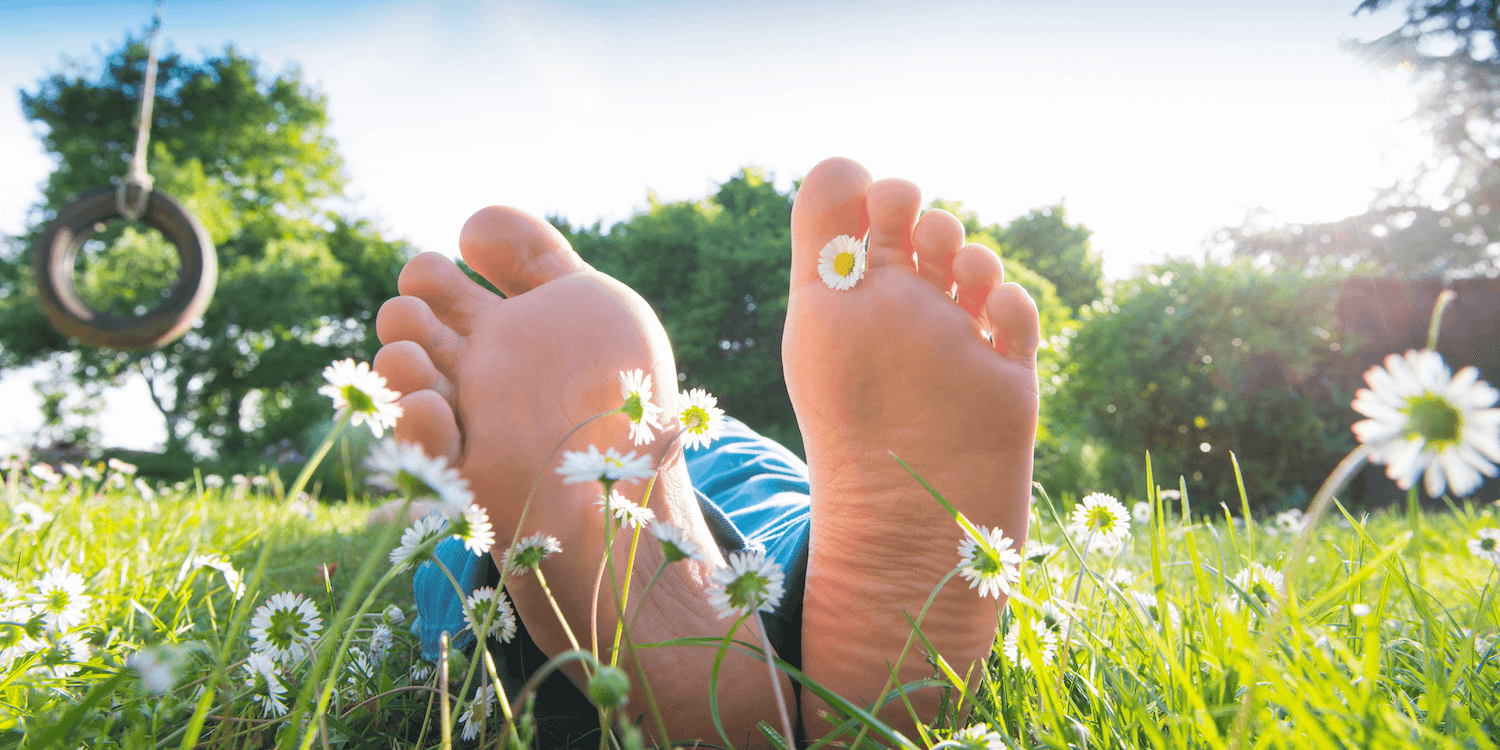
The History Of Grounding
Our ancestors were once very connected to the Earth! The practice of grounding or earthing has a long history that dates back to ancient times. Insulated rubber and plastic materials have replaced the conductive leather soles that once were popular. Many cultures, such as Indigenous cultures and the Chinese, believed in the healing power of the Earth and utilized it to promote health and wellbeing.
In the 20th century, researchers began studying the electrical properties of the Earth and how they can affect the human body. This led to the discovery of the body’s electrical nature and the importance of grounding to balance the body’s electrical charge. Clint Ober is also credited with popularizing the grounding movement through his research, writing, and development of grounding products.
We’ve become so disconnected from connecting with the Earth.
How Do You Ground?
It’s very, very simple and you’ve likely done it many times before! Simply walk barefoot outside on grass, dirt, sand, concrete, or unsealed brick. Avoid stepping on asphalt (which is made with petroleum), wood, and vinyl, since they’re not conductive materials (meaning they won’t transfer electrons). The more grounding, the better.
You don’t need to only ground on grass. Opt for conductive materials that don’t have a layer of another material underneath them. If it’s cold out, clear any snow or ice that might be in your way.
Can You Ground With Socks On?
Take those socks off! While you can ground with socks on, it’s not as effective. Socks create a barrier and they can interrupt the energetic flow. It’s best to ground barefoot.
Community Feedback
Let’s hear it directly from the In On Around community! I asked over 19,800+ followers on Instagram about their experience with grounding. Here’s their feedback:
Question 1: How Often Do You Practice Grounding?
Of the 201 responses received, 116 (57.7% of people) incorporate grounding in some form.
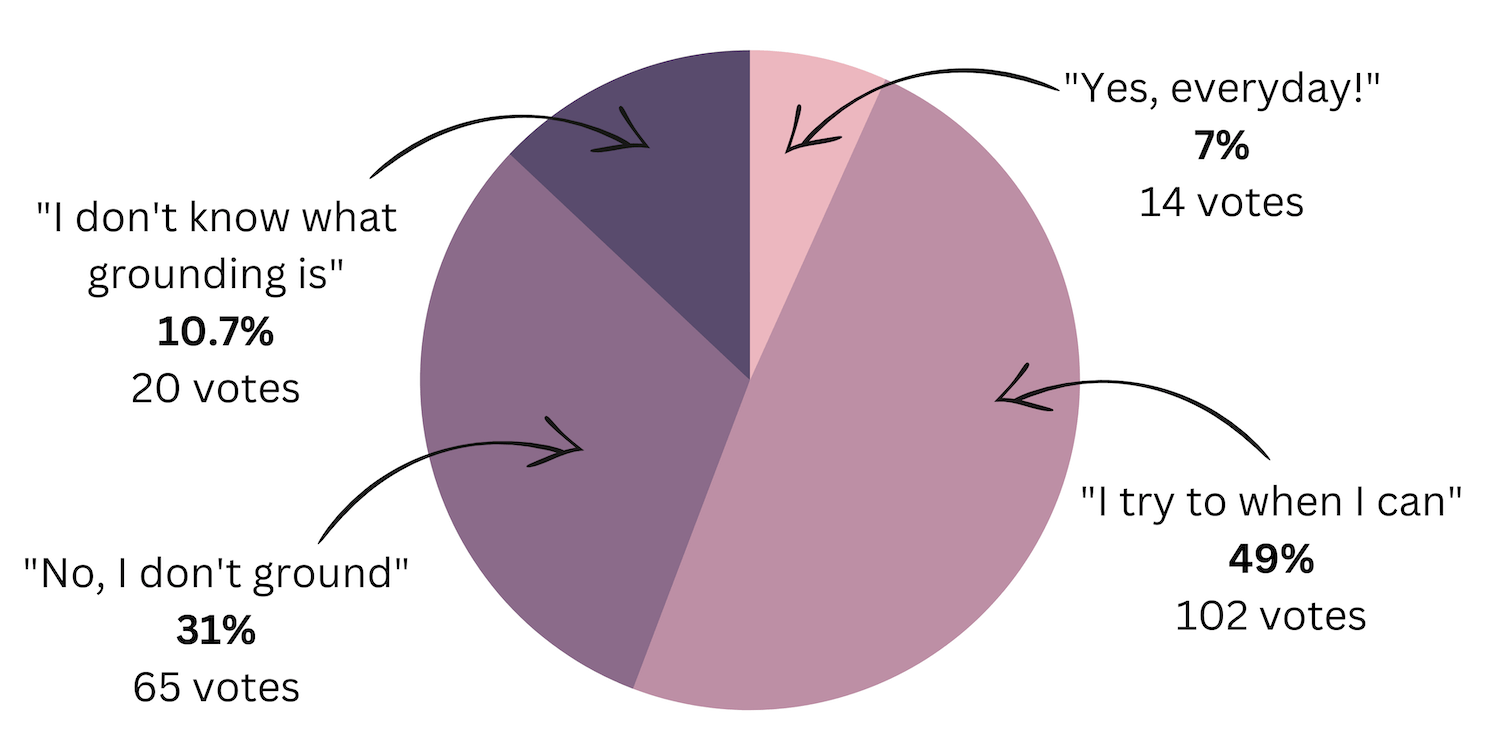
Question 2: Do You Notice A Difference When You Practice Grounding?
Of the 130 responses received, 96 people (73.8%) notice a difference in their wellbeing when they practice grounding.
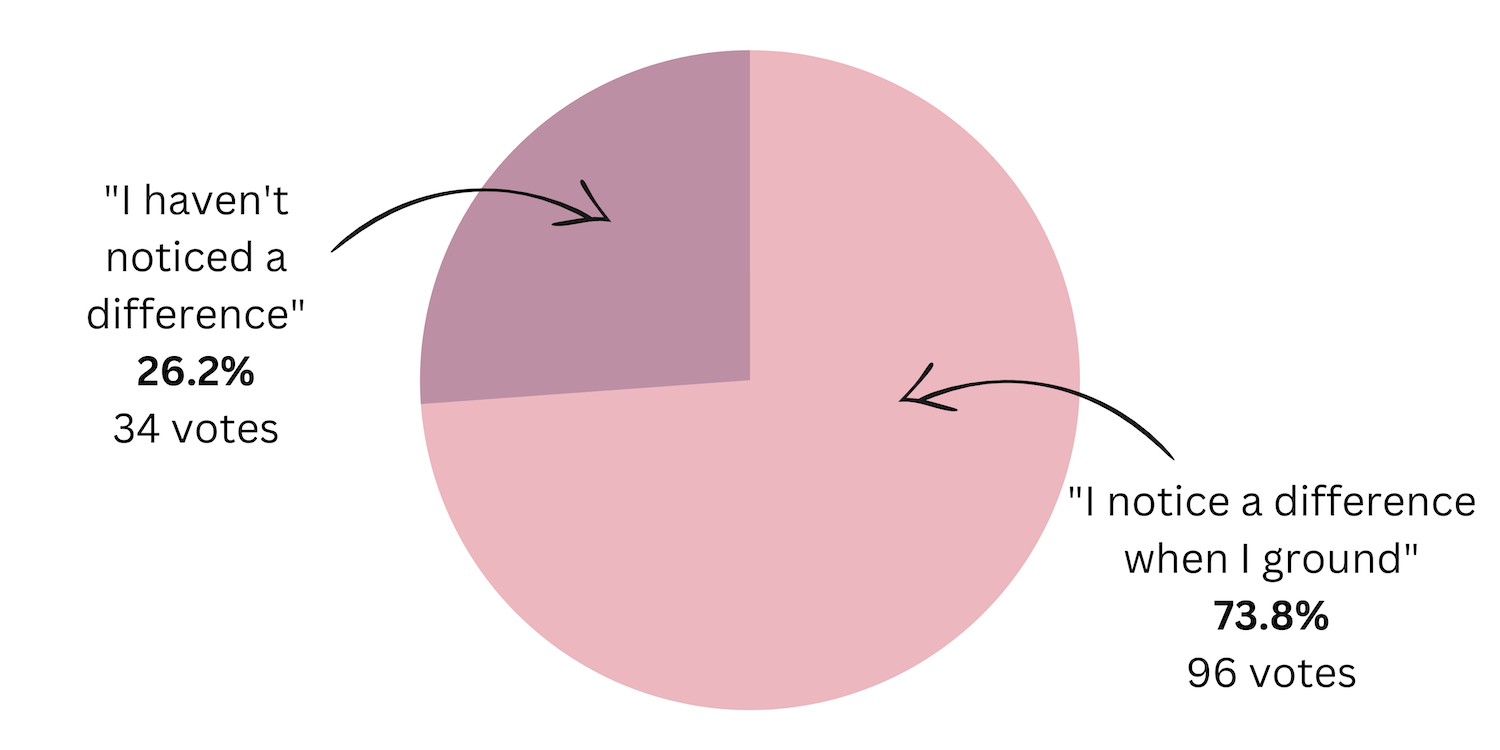
The Science Behind Grounding – Is It Legit?
Yes, grounding is legitimate. Grounding is not some “woo woo” spiritual myth. While studies are limited, there’s research to back it up!
We are electrical beings through and through. Your body naturally absorbs electrical charges throughout the day. When we make direct contact with the earth’s surface through our bare skin, we create a conductive connection that allows electrons (negative ions) to flow between the ground and our body. This exchange of electrons is believed to help neutralize free radicals, which can cause oxidative stress and inflammation in the body.
Grounding isn’t a “woo woo” spiritual myth. It’s based on science.
These electrons help our body achieve a balanced state. It’s not oftentimes recommended by a doctor’s office, maybe because they can’t make any money off of it (but that’s a much larger conversation...).
Health Benefits Of Earthing
Are there actually health benefits to walking barefoot? Let’s dive into the potential benefits. [Studies: 1, 2, 3, 4, 5, 6, 7, 8, 9, 10]
Physical Health Benefits
- Reduces inflammation in the body
- To learn more about reducing inflammation, check out: How To Eat An Anti-Inflammatory Diet
- Promotes better sleep quality and duration
- To learn more about improving sleep, check out: Open When You Can’t Sleep! 18 Tips To Beat Insomnia
- Reduces pain and soreness
- Enhances immune system function
- Lowers cortisol levels (stress hormone)
- Improves blood flow and circulation
- Decreases muscle tension and stiffness
- Helps regulate blood sugar levels
- Reduces the risk of chronic diseases such as heart disease and diabetes
Mental Health Benefits
- Reduces stress and anxiety levels
- Enhances mood and emotional wellbeing
- Promotes relaxation
- Increases energy and vitality
- Improves mental clarity and focus
- Reduces symptoms of depression
- Enhances overall quality of life
- Improves feelings of happiness and satisfaction
Keep in mind that these health benefits are potential. The studies conducted have been on a small scale. Is it a placebo effect? Possibly… but as long as you’re grounded in a safe area outside and don’t step on anything sharp while barefoot, there is little to no harm. It’s typically safe and natural for all people – young or old, healthy or sick.
6 Daily Grounding Techniques (Even For City Dwellers)
Here are some tips for incorporating earthing into your daily routine:
1 – Take a Walk Outside
Take a stroll outside (barefoot, if it’s safe to do so). Exercising outside (like doing yoga) is a great practice to incorporate into your daily routine. You can also incorporate forest bathing! Forest bathing, also known as Shinrin-yoku, is a practice that involves immersing oneself in nature by spending time among trees and in forests.
Incorporate grounding into your daily routine by making it a regular habit, such as taking a walk every morning or sitting outside during your lunch break.
2 – Stand Barefoot On Grass, Sand, Or Dirt for 20 Minutes
Even in the city, there are parks, gardens, or green spaces that you can access. If you can, take your shoes and socks off… even if it’s just for a couple of minutes. Swimming in water, like in the ocean, can also increase your skin-to-earth contact.
Of course, this is easier said than done sometimes, especially in the winter… but just a couple of minutes can make a difference! It’s best to stand on grass that hasn’t been recently treated with pesticides or herbicides. After coming back inside, make sure to clean your feet thoroughly for any residues.
Check Out The In On Around® Shop
3 – Sit Or Lay On The Ground
If you don’t want to stand outside, you can maximize skin-to-earth contact by sitting or laying down. Allowing your skin to directly contact the earth is best, so moving aside clothing could be beneficial. Of course, keep all your clothes on in public – you don’t want to upset your neighbors!
4 – Keep Electronics Off Your Body
Limit exposure to electronics, such as phones and laptops, to reduce exposure to EMFs that can interfere with the body’s natural electrical charge. While grounding, it’s especially important to keep your phone off your body (or, at a minimum, turn it on airplane mode). It’s best to have zero interference.
5 – Incorporate Grounding Shoes
Use earthing shoes if you can’t get outside to connect with the earth directly. These shoes have conductive soles. Shoes with leather soles (not rubber) are more conducive and better for grounding. Keep in mind, there is limited scientific evidence to back up these claims, so take it with a grain of salt.
What Are The Best Grounding Shoes?
There are plenty of minimalist shoes on the market with a wider toe box and thinner soles. Check out these brands:
6 – Start Gardening
Play around in the dirt! The act of digging in the soil, planting seeds, and caring for plants can help individuals feel more centered. Now’s a great time to start a home garden to grow your own food – there’s no better way to connect with nature.
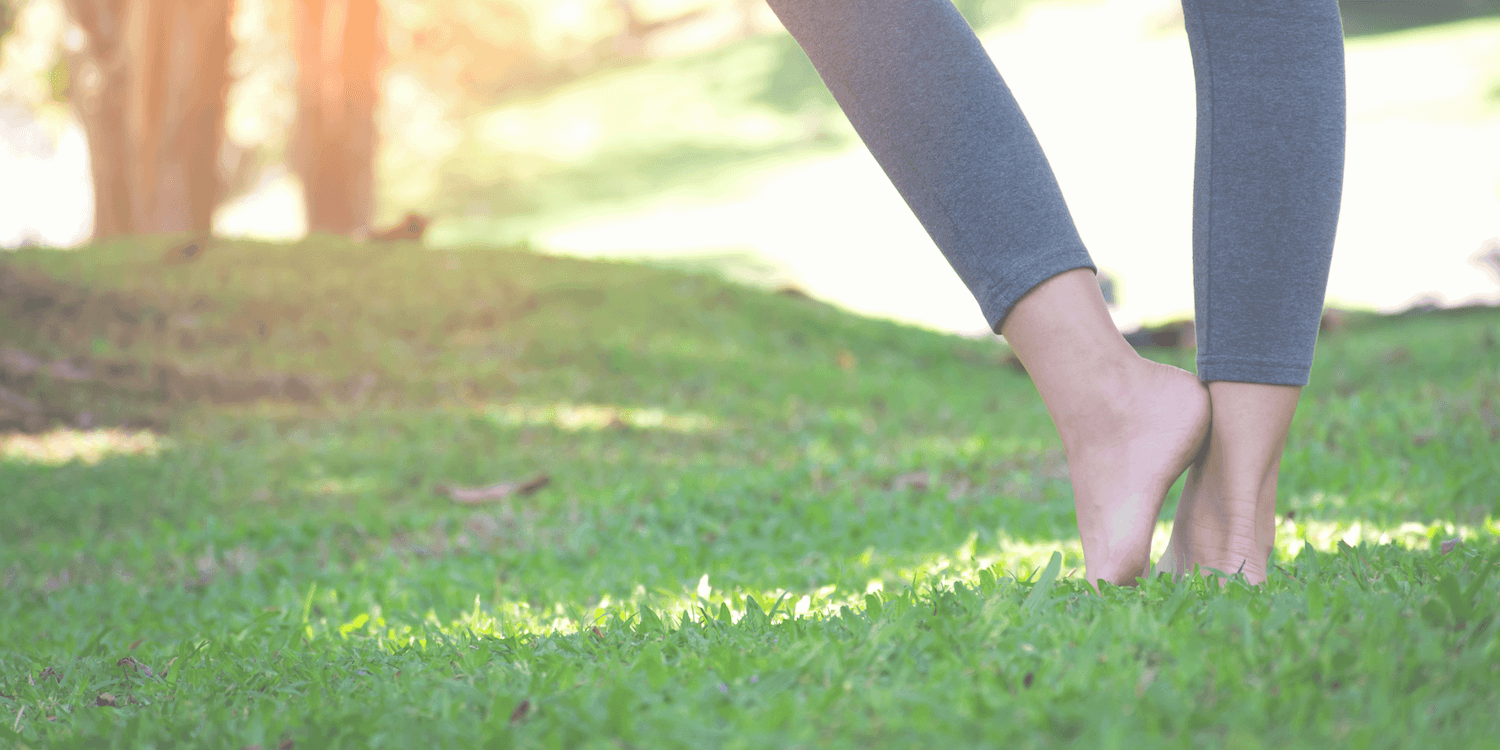
Why I’m Not A Fan Of Most Grounding Equipment
There are a ton of grounding mats, grounding sheets or blankets, socks, bands, patches, beds, etc.. sold to practice grounding inside. Here’s the thing: you don’t need to complicate a simple process. You don’t need expensive “grounding” equipment to get the results. Just prioritize going outside on a daily basis. It’s free and simple.
I don’t like the idea of plugging in a grounding mat to get the same results. By plugging a device into an outlet, even if it’s in the “grounding” socket, you’re at an increased risk of EMF exposure, electrical shock, fires, and burns. It’s simply not worth it, in my opinion. It can also worsen electrosensitivity for some people. They should especially be avoided during a thunderstorm. There’s also not a lot of research to prove that these grounding mats make much of a difference.
Companies are trying to commercialize grounding – which is incredibly ironic. True grounding is as natural as it gets.
Beware of EMFs in some of these “earthing” products.
You can sometimes measure if you’re “grounding” by connecting a multimeter to your grounding mat, but, again, I don’t see the need. There are some earthing mats where you can route the cord outside and stick a stake straight into the ground (using a grounding rod) – these are “better” in my opinion, but still pretty unnecessary. These are unlikely to make much of a difference, but the risks are minimal.
I don’t like spending money on unnecessary items – I would rather my money go to better use. Maybe this is an unpopular “crunchy” opinion, but I haven’t found convincing evidence to make the cost worth it. There’s no need to reinvent the wheel on a process that is free and simple.
Final Thoughts – Grounding to the Earth
Clearly, there is proof that grounding to the earth creates a stable internal bioelectrical environment. Some potential advantages of grounding may include quicker recovery, lower stress levels, decreased inflammation and pain, better quality sleep, and increased levels of energy. Grounding is certainly not a fad! Just make sure you stay aware of your surroundings and be careful where you step.
So, if you’re feeling a bit “un-grounded,” why not take a stroll on the grass, or sit on the ground and connect with the earth’s electrical charge? After all, it’s time to get “down to earth” and let nature do its work!
⬇ Pin this “Grounding To The Earth Benefits?” pic on Pinterest for future reference! ⬇
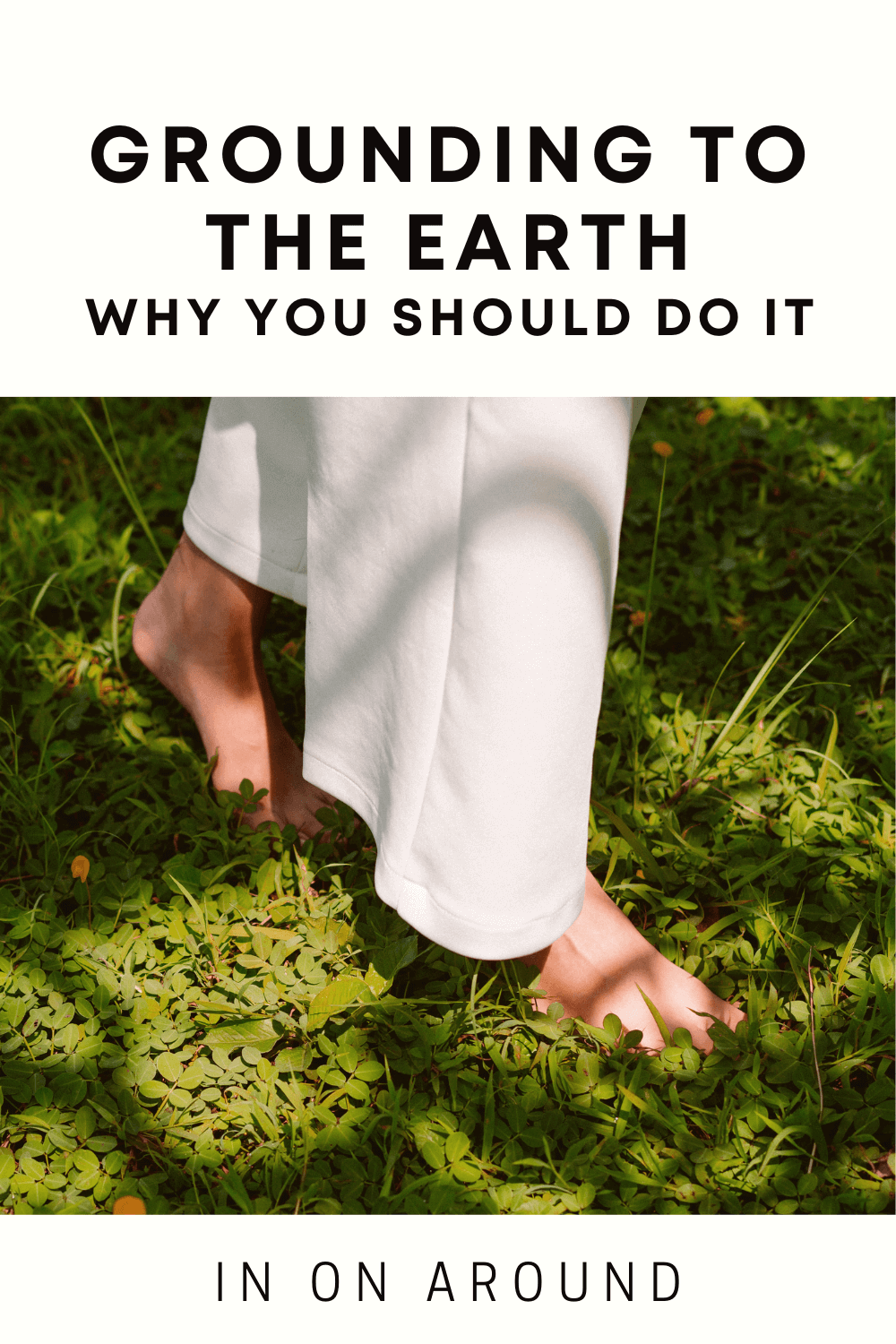
Frequently Asked Questions – Earthing Health Benefits
Click on the below FAQs to learn more about grounding techniques and grounding yourself.
Can You Practice Grounding In The Winter?
Is There Scientific Evidence Behind Grounding Or Earthing?
Does Grounding Really Work?
Can You Create An In-Home Grounding Bin?
Have You Tried Grounding?
Let me know your thoughts and key takeaways in the comments below!
You can watch our web story here.
xoxo,

Want to read more? Check out my other articles here!
Other references on Grounding To The Earth: Good Net, Healthline, Gundersen, Harmony 783, Dr. Axe, Barefoot Healing, USA Today, Grounded, Doctor Kiltz, Earth Runners, Very Well Mind, Better Earthing, The Movement Paradigm, Chopra, My Global Viewpoint, Born To Live Barefoot, Chronically Ridicilous, EMF Wise, Get Healthy And Grounded
Copyright In On Around LLC 2023 ©. The statements made on this website have not been evaluated by the FDA (U.S. Food & Drug Administration). They are not intended to diagnose, treat, cure, or prevent any disease. The information provided by this website should not be used as individual medical advice and you should always consult your doctor for individual recommendations and treatment. The information contained in this site is provided on an “as is” basis. Related to this site, there are no guarantees of completeness, accuracy, usefulness, or timeliness. In On Around LLC assumes no responsibility or liability for any errors or omissions in the content of this site.


